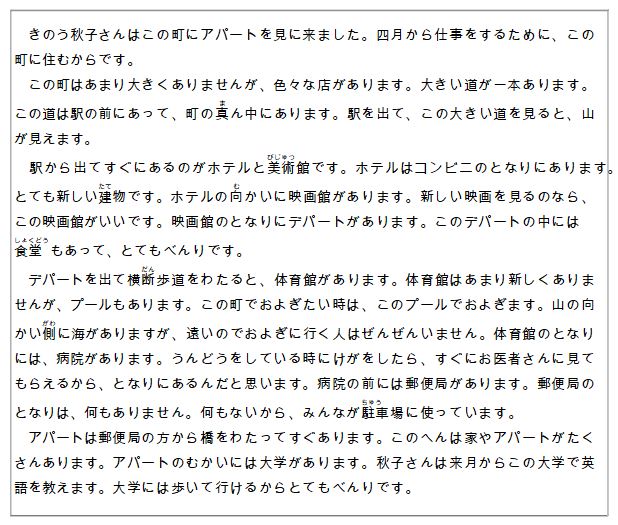Indicate if the following statements are true (vero) or false (falso), according to the reading.
1. Il cannolo è un frutto.
2. Ad Annalisa piace il latte di limone.
3. Monte Etna è una città.
4. La mandorla è un dolce.
5. La Sicilia è una regione.
6. La Sicilia è vicino alla Puglia.
7. Il mare Mediterraneo circonda la Sicilia.
8. Le spiagge siciliane sono famose.
9. L’arancia rossa è un dolce tipico.
10. Annalisa e Giovanna sono sarde.
1. Falso
2. Falso
3. Falso
4. Falso
5. Vero
6. Falso
7. Vero
8. Vero
9. Falso
10. Falso
You might also like to view...
A hospital is next to the gym because

a. there was no other place to build the gym.
b. it's also close to the university.
c. the hospital and the gym are owned by the same person.
d. injured people can be easily carried to the hospital.
Research has shown that teacher-student interaction differs according to the gender of the student (the gender of the teacher does not seem to matter), although most teachers are unaware of any inequities. Studies consistently show that boys have more interventions with teachers than do girls. For example, it has been found that teachers are more responsive to the disruptive behavior of boys than
girls and more likely to reprimand boys. When children request attention, teachers generally respond to boys with instructions and to girls with nurturance. In addition, girls receive more attention when they are physically close to the teacher, whereas boys are given attention at a distance. It has also been found that the feedback received by boys and by girls on the intellectual quality of their work differs. For example, boys receive considerable criticism for failing to obey the rules, whereas girls receive criticism related to their performance. Boys attribute their failure to do well to lack of effort, whereas girls attribute it to a lack of ability. Do some girls, then, give up trying to succeed when they reach high school due to the responses their elementary teachers have given them? It is well established that girls generally perform better academically than boys in elementary school but falter in high school. For example, girls do not do as well as boys in science and math by the time they reach adolescence. In addition, girls typically take fewer advanced math classes than do boys in high school and college. Even though Title IX of the Educational Amendment Act of 1972 obliged schools to provide equal treatment for males and females, schools are still shortchanging girls according to a report by the AAUW. Although more girls are now involved in athletics, the contributions and experiences of females are not as visible as are those of males in textbooks. Furthermore, the pace of change is slow in gender-segregated enrollment patterns in vocational education, with girls primarily enrolled in office and business-training programs, and boys in programs leading to higher-paying trade jobs. Sexuality and the realities of sexual activity (pregnancy, disease, rape) are rarely discussed in schools, although, by law, sexual harassment is defined and consequences delineated. Teachers must be trained to foster assertive and affiliative skills in both girls and boys. School curricula and textbooks should be monitored for gender stereotypes and provide positive role models for both girls and boys. According to this passage, a. girls and boys do equally well in their class work in elementary school. b. girls take more advanced math classes in college than do boys. c. girls do less well than boys in science and math classes in high school. d. girls have better math skills than boys, but do less well than boys in science.
Select the sentence that is correctly punctuated.
A) Praveena wondered, “Why have I been so lucky lately?” B) Praveena wondered why have I been so lucky lately?
Organizations issue an RFP when they
a) want a contract with a government agency b) are required to solicit bids for a project c) need to present the results of a project d) are interested in one solution to a problem